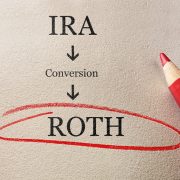Self-Directed Roth IRA Tips for Newbies
You’ve heard of the term “newbie,” right? Usually reserved for worlds of video games, online communities, or new skills. However it actually means anyone who’s a rookie to a new topic—but is willing to learn. If that’s how you feel when it comes to retirement topics, don’t be intimidated. Lots of people have been in your shoes before and ultimately carved out a successful retirement path for themselves. But you might be hung up on one particular retirement quirk in particular: the art of using the Self-Directed Roth IRA.
How can you go from being a “newbie” to understanding much more about Self-Directed Roth IRAs? There’s no single answer. Instead, we have a few tips you can use to get the most out of a Self-Directed Roth IRA.
Self-Directed Roth IRA Tip #1: Know the Rules
First off, you have to know why so many investors use a Roth IRA in the first place. These Self-Directed Roth IRA investors often know that a Roth IRA offers the ability to use after-tax contributions. This means that you pay the taxes upfront as opposed to during retirement. As long as you stick to the rules of retirement investing, the rest of what’s in the Roth IRA can be available to you, tax-free—upon hitting retirement age. You’ll also have added flexibility. For example, the ability to access the contributions you made (but not the growth) before paying early penalties.
Self-Directed Roth IRA Tip #2: Know the Possibilities
Everything in the tip above is critical, but it’s also universal to all Roth IRAs. What about self-direction? When you Self-Directed a Roth IRA, using your connection through a Self-Directed IRA custodian to manage it, you can then access a wide variety of retirement assets. This includes real estate, precious metals, tax liens, private businesses, and more. In fact, there are too many possibilities to list here.
Why choose a Roth IRA? Because for many investors, the prospect of having valuable real estate properties is not enough. Imagine having real estate properties within a Roth IRA, in which you do not have to pay taxes on the income taken from a Roth IRA after retirement, presuming all of the obligations have been met. Once you see why this offers a whole new world of possibilities in retirement investing, you start to see the advantages.
Self-Directed Roth IRA Tip #3: Know the Distribution Rule
One of the key components of the Roth IRA is that you don’t have to start taking required minimum distributions, or RMDs, out of them at a certain age. For many investors, this age is typically around 72. Because the money in the retirement account has not been taxed yet, those investors will have to pay something in if they survive to that age and begin taking out RMDs. This ensures that the government does collect on the taxes that were deferred until retirement.
In Roth IRAs, however, no such taxes are deferred—they’re paid upfront. This gives Roth IRA investors more flexibility for holding onto investments. This is especially useful during the key retirement years, when the compounding returns of the investments should have been building up for several decades. And it’s a powerful way for investors to make sure that they receive the full value of their investments when retiring.
Interested in learning more about Self-Directed IRAs? Contact American IRA, LLC at 866-7500-IRA (472) for a free consultation. Download our free guides or visit us online at www.AmericanIRA.com.









